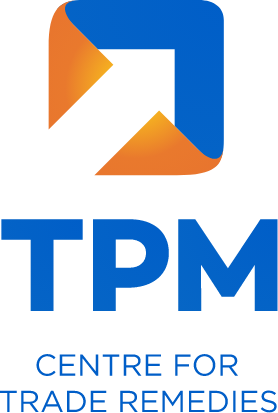Product Description- The product under consideration is 1,1,1,2 – Tetrafluoroethene or R-134a of all types whether packed or unpacked. The scope of the product excludes cGMP approved pharma grade
R-134a is also known as Tetrafluroethane, Genetron 134a, Suva l34a or HFC-I34a, HFA-134a and Norflurane. It is a haloalkane refrigerant with thermodynamic properties similar to R-12 (dichloroditluoromethane), but without its ozone depletion potential.
HS Codes – The product under consideration is classified under Chapter 29 of the Customs Tariff Act, 1975, under the subheadings 29034500. The customs classification is only indicative and not binding.
Uses – R134A is primarily used as high temperature refrigerant for automobile air-conditioners.
Country involved – People’s Republic of China.
Applicant – M/SSRF Limited.
Period of investigation – 1st April 2023 to 31st March 2024.
Injury period – 2020-21, 2021-22 and 2022-23 and the period of investigation.
Margins and recommended Duties:
| Producers(s) | Dumping margin (%) | Injury margin (%) | Benchmark price |
| Shaanxi Sinochem Lantian New Chemical Material Company Limited | 30-40% | 40-50% | 4439 MT/USD |
| The Sinochem Environmental Protection Chemicals (TAICANG) Co. Ltd. | 30-40% | 40-50% | 4423 MT/USD |
| Shandong Dongyue Refrigerants Company Limited | 20-30% | 30-40% | 4508 MT/USD |
| Zhejiang Sanmei Chemical Ind. Co. Ltd. and Jiangsu Sanmei Chemical Ind. Co. Ltd | 20-30% | 30-40% | 4581 MT/USD |
| Ruyuan Dongyangguang Fluorine Co. Ltd | 30-40% | 40-50% | 4583 MT/USD |
| Zibo Feiyuan Chemical Co., Ltd | 20-30% | 30-40% | 4588 MT/USD |
| Any other producers | 55-65% | 30-40% | 5251 MT/USD |
Key findings:
- The product under consideration in the present investigation is R-134a, also known as Tetrafluoroethane, Genetron 134a, Suva 134a, HFC-134a, HFA-134a, and Norflurane.
- The scope includes all types of 1,1,1,2-Tetrafluoroethane (R-134a), whether packed or unpacked. However, cGMP-approved pharmaceutical grade is excluded.
- The primary distinction between non-Pharma (i.e., industrial grade) and non-cGMP Pharma grade lies in the degree of purification.
- Under the Kigali Amendment, China begins phasedown in 2029 on a 2020-2022 baseline, while India starts in 2032 on a 2024-2026 baseline. By increasing R-134a production in 2022, China inflated its baseline. Without duties, the excess production will be diverted to India at dumped prices.
- Imports from China PR have increased during the injury period, with the sharp rise in 2022–23 attributable to China’s acceptance of the Kigali Amendment to the Montreal Protocol
- The import price is lower than both the selling price and cost of sales of the domestic industry, resulting in positive price undercutting.
- Due to low-priced imports from China PR, the domestic industry was unable to align its selling prices with changes in cost of sales.
- Profit before tax, profit before interest and tax, cash profit, and return on investment turned negative during the period of investigation.
- The imposition of anti-dumping duties in the past has been effective in enabling the domestic industry to increase capacity, invest, and grow.
- The imposition of anti-dumping measures does not restrict imports from the subject country.
- There is no evidence of any adverse impact on the downstream industry from the duties previously in force. The imposition of anti-dumping duty will likewise not have any adverse effect on the downstream industry.

